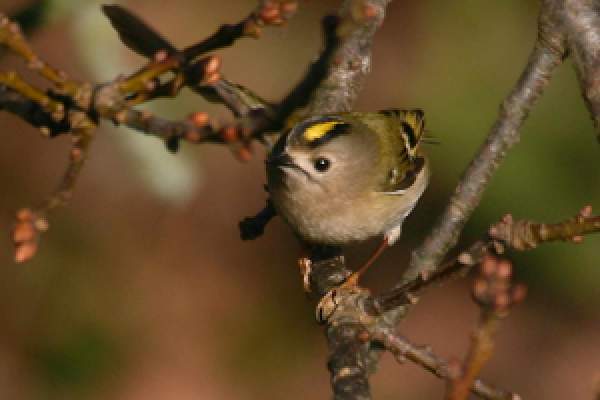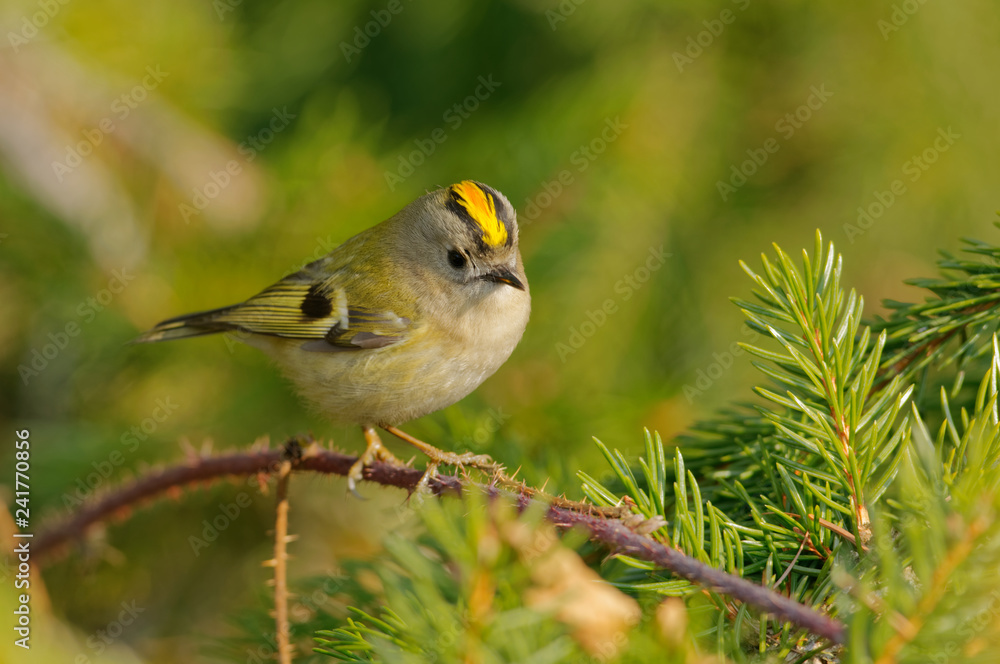Goldcrest (Regulus regulus): a beautiful little bird with a flower-like crest on its head
Regulus regulus

The Goldcrest is a really tiny bird, just six and a half grams in weight when adult; this makes it some 20-30% smaller than the Chiffchaff. Despite its energetic tit-like behaviour, it is still very much a warbler in shape. The plumage is olive above and buff white below, with darker wings displaying two white wing bars and an orange or yellow crown stripe flanked by a black edge. Adult males have an orange or orange-yellow crown stripe, that in females is yellow and juveniles lack the crown stripe altogether.

Goldcrests have a very high-pitched song that many people are unable to hear. This is a shame, because the song is sweet-sounding and it is often the first or only indication that a Goldcrest is present. The commonest call is an equally high-pitched ‘siii’ used to keep group members together.

Goldcrests are serial nesters, the female regularly starting the second clutch of eggs before the first brood of nestlings have fledged. The male does the feeding while the female builds the new nest. The nest itself is very neat and is basically a spherical hammock positioned in the outer twigs of a spruce or fir tree. This tremendous breeding effort can produce 20 chicks a year, something that is essential given the very high winter losses to cold weather. After very cold winters, there may be only a quarter of the previous autumn’s population left to breed.

Such a tiny bird would seem to be no candidate for long distance migration. Our own birds wander, but do not really migrate properly. However, ringing has shown regular movements from countries around the North Sea and Baltic into Britain for the winter. One has even reached us from Russia and several from Poland, though Norway, Sweden and Finland are their usual points of origin. It seems amazing that any of them can survive two journeys as well as the cold weather but some clearly do, as several Goldcrests ringed here in winter have been found back home in Fennoscandia.
